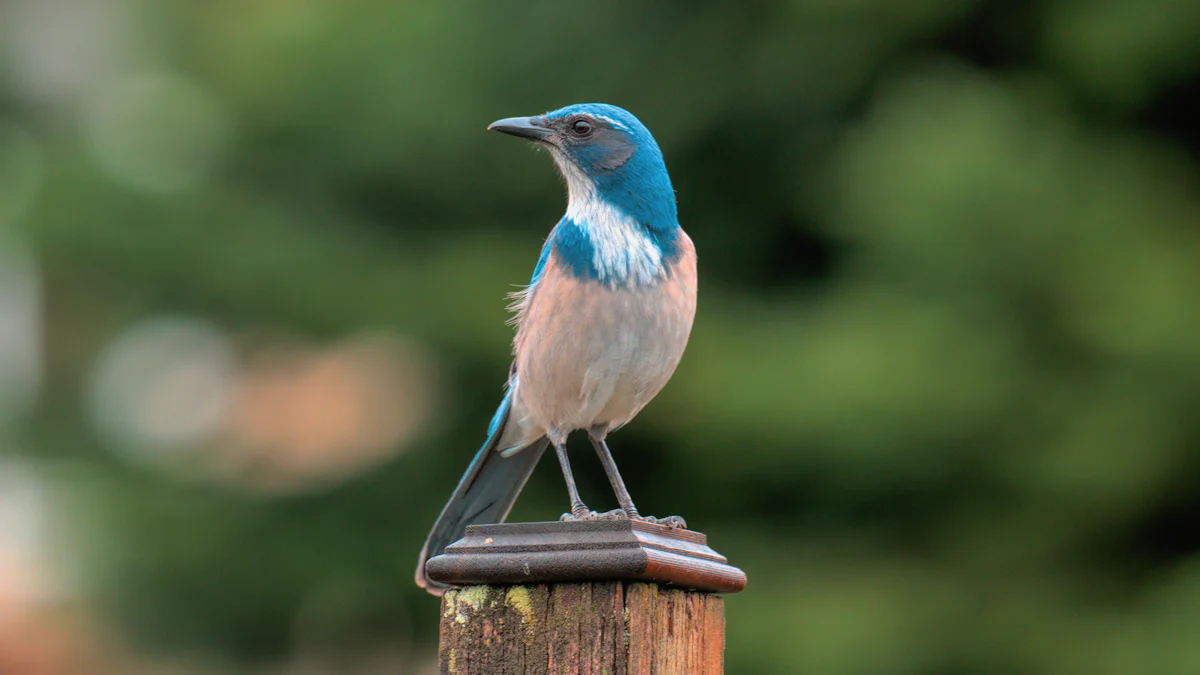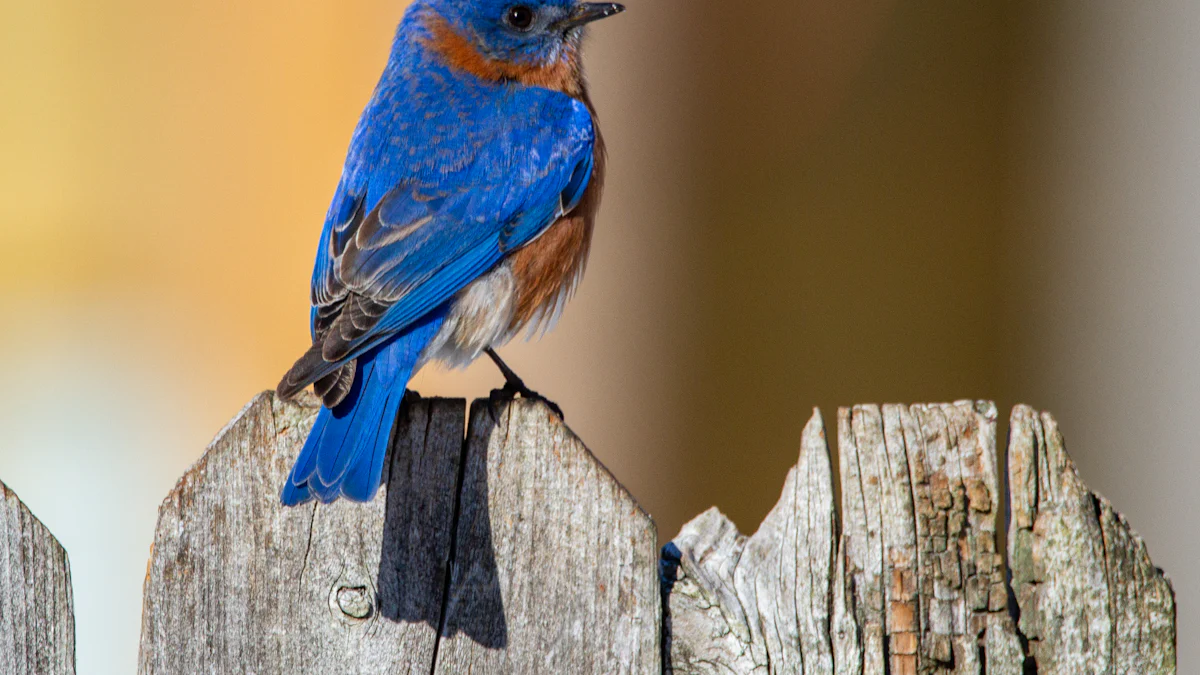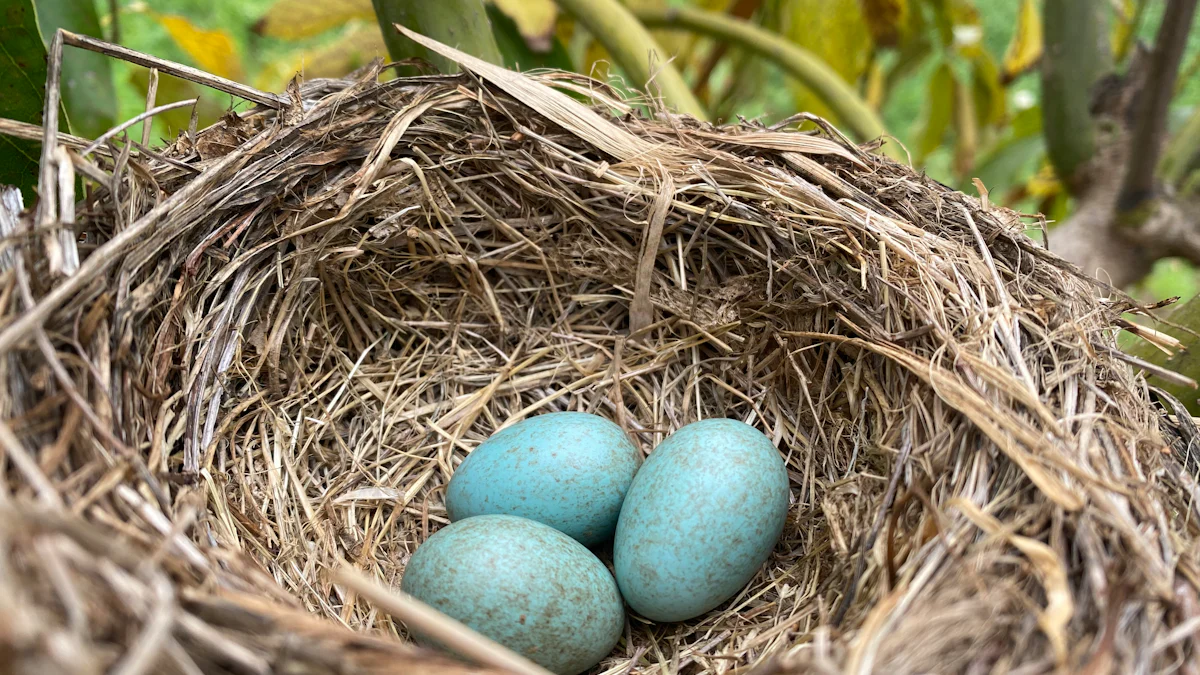
Bluebirds captivate bird enthusiasts with their vibrant plumage and cheerful songs. As cherished backyard visitors and vital contributors to the ecosystem, they deserve proper care and nourishment. These birds thrive on high-quality, protein-rich foods that support their energy needs and overall health. Dried mealworms provide an ideal solution, offering a convenient and nutritious option that mimics their natural diet. Packed with essential proteins and nutrients, dried mealworms help bluebirds stay healthy and active, especially during breeding seasons or harsh weather conditions. Feeding bluebirds dried mealworms creates a rewarding experience for both the birds and their admirers.
Key Takeaways
- Dried mealworms are a nutritious food source for bluebirds, providing essential proteins and vitamins that support their health and energy needs.
- Feeding bluebirds dried mealworms is especially important during breeding season and winter when natural food sources are scarce.
- Choose specialized feeders designed for bluebirds to prevent larger birds from stealing the mealworms, ensuring bluebirds get their share.
- Position feeders in open, sunny areas at eye level to make them easily accessible and safe for bluebirds.
- Start with a small handful of dried mealworms and adjust the quantity based on the number of bluebirds visiting your feeder.
- Create a bluebird-friendly environment by planting native shrubs, providing water sources, and avoiding chemicals in your yard.
- Consider making DIY feeders to attract bluebirds while adding a personal touch to your outdoor space.
Benefits of Feeding Bluebirds Dried Mealworms
Feeding bluebirds dried mealworms offers numerous advantages that benefit both the birds and those who enjoy their presence. These benefits extend beyond convenience, providing essential support for the health and well-being of bluebirds throughout the year.
Nutritional Advantages
Dried mealworms are packed with high-quality protein, making them an excellent food source for bluebirds. Protein plays a vital role in muscle development, feather growth, and overall energy levels. According to studies, the amino acid profile of insect protein, including mealworms, closely matches the dietary needs of birds. This ensures that bluebirds receive the nutrients they require to thrive.
In addition to protein, dried mealworms contain essential vitamins and minerals. These nutrients improve health markers in birds, such as stronger feathers and better reproductive success. Bluebirds, like many other bird species, instinctively seek out protein-rich foods. Offering dried mealworms satisfies this natural preference while supporting their dietary needs.
Unlike seeds or other common bird foods, dried mealworms mimic the natural diet of bluebirds. This makes them a preferred choice, especially during times when insects are scarce. Their nutritional value and appeal make dried mealworms a reliable option for anyone looking to support bluebird health.
Seasonal Importance
The importance of feeding bluebirds dried mealworms becomes even more evident during specific seasons. Breeding season, for example, demands higher energy and nutrient intake for bluebirds. Parents need extra protein to care for their young and maintain their own strength. Research from the North American Bluebird Society highlights how mealworms support bluebirds during this critical time.
Winter also poses challenges for bluebirds, as natural food sources become limited. Dried mealworms provide a consistent and accessible option when insects are unavailable. Their long shelf life and ease of storage make them a practical choice for bird enthusiasts who want to help bluebirds through harsh weather conditions.
By offering dried mealworms year-round, individuals can ensure that bluebirds receive the nutrition they need, regardless of the season. This simple act of care not only supports the birds but also enhances the joy of watching these vibrant creatures thrive.
How to Feed Bluebirds Dried Mealworms

Feeding bluebirds dried mealworms can be a delightful experience when done right. By selecting the proper feeder, placing it strategically, and offering the right amount of food, anyone can create a welcoming environment for these charming birds.
Choosing the Right Feeder
The type of feeder plays a crucial role in attracting bluebirds. Specialized feeders designed for mealworms work best. For instance, the Bluebird Jail Feeder prevents larger birds, like starlings, from stealing the mealworms, ensuring bluebirds get their share. Another excellent option is the BBF1 Mealworm Feeder, which allows small songbirds to feed peacefully without interference from bully birds.
For those who enjoy DIY projects, a simple shallow dish or a small cup feeder can also work. The Bluebird Feeder Single Cup Plant Stake offers a convenient way to serve dried mealworms while adding a decorative touch to gardens. Its blue color naturally attracts bluebirds, making it an effective choice. When selecting a feeder, prioritize designs that are easy to clean and refill to maintain hygiene and convenience.
Placement Tips
Where the feeder is placed significantly impacts its success. Bluebirds prefer open spaces where they can easily spot food and feel safe from predators. Position the feeder in a sunny area, away from dense shrubs or trees that might hide potential threats. A perch nearby can help bluebirds feel more comfortable as they approach the feeder.
Placing the feeder at eye level or slightly higher makes it easier for bluebirds to locate the mealworms. For example, the Bluebird Feeder Single Cup Plant Stake can be inserted into planters or garden beds, providing an elevated feeding spot. To encourage bluebirds to visit, consider starting with a visible and accessible location. Once they become familiar with the feeder, it can be moved to a more permanent spot.
How Much to Feed
Offering the right amount of dried mealworms ensures bluebirds receive adequate nutrition without overfeeding. On average, bluebirds consume about 15 dried mealworms per day. Start by placing a small handful in the feeder and observe how quickly they are eaten. Adjust the quantity based on the number of bluebirds visiting and their feeding habits.
During the breeding season, bluebirds may require more mealworms to support their chicks. In winter, when natural food sources are scarce, providing a consistent supply of dried mealworms can make a significant difference. To make the mealworms more appealing, soaking them in water can rehydrate them, mimicking the texture of live insects.
By following these steps, anyone can enjoy the rewarding experience of feeding bluebirds dried mealworms. Watching these vibrant birds thrive brings joy and strengthens the connection to nature.
DIY Feeder Options for Feeding Bluebirds Dried Mealworms

Creating a DIY feeder for bluebirds can be a fun and rewarding project. It not only saves money but also allows for customization to suit your backyard and the preferences of these delightful birds. With a little creativity and effort, anyone can craft a feeder that attracts bluebirds and enhances their feeding experience.
Simple DIY Feeder Ideas
For those who prefer straightforward solutions, simple DIY feeders are an excellent choice. These feeders require minimal materials and can be assembled quickly. Here are a few ideas:
-
Shallow Dish Feeder: Use a small, shallow dish or bowl to hold dried mealworms. Place the dish on a stable surface, such as a tree stump or a garden table. To make it more appealing, position it under a perch where bluebirds can easily spot it.
-
Cup Feeder on a Stake: Attach a small plastic or ceramic cup to a wooden or metal stake. Insert the stake into the ground or a planter at eye level. This setup keeps the mealworms elevated and visible to bluebirds while deterring ground-dwelling pests.
-
Recycled Jar Feeder: Repurpose a glass jar by securing it horizontally to a wooden base. Fill the jar with dried mealworms and place it in an open area. Bluebirds can perch on the base and access the food with ease.
These simple feeders are easy to clean and refill, making them practical options for beginners.
Creative Feeder Designs
For those who enjoy adding a touch of creativity, unique feeder designs can make feeding bluebirds even more enjoyable. These designs not only serve a functional purpose but also add charm to your outdoor space:
-
Hanging Basket Feeder: Use a small wire basket or mesh container to hold dried mealworms. Hang the basket from a tree branch or a shepherd’s hook. The open design allows bluebirds to access the food while keeping it secure from larger birds.
-
Log Feeder: Drill small holes into a piece of untreated wood or a log. Fill the holes with dried mealworms. This design mimics the natural feeding habits of bluebirds, as they often forage for insects in tree bark.
-
Decorative Feeder House: Build a small wooden house with an open front and a platform for mealworms. Paint it in shades of blue to attract bluebirds. This feeder doubles as a decorative element in your garden.
-
Upcycled Teacup Feeder: Attach a vintage teacup and saucer to a wooden post or a metal rod. Fill the teacup with dried mealworms and place it in a sunny spot. This whimsical design adds a touch of elegance to your yard.
Creative feeders not only attract bluebirds but also provide an opportunity to showcase your personality and style.
By crafting a DIY feeder, individuals can enjoy the satisfaction of creating something functional and beautiful. Feeding bluebirds dried mealworms becomes an even more rewarding experience when using a feeder made with care and creativity.
Storing and Preparing Dried Mealworms for Bluebirds
Proper storage and preparation of dried mealworms ensure they remain fresh, nutritious, and safe for bluebirds. By following a few simple steps, bird enthusiasts can provide a high-quality food source that supports the health and well-being of these beautiful birds.
Proper Storage
Storing dried mealworms correctly helps maintain their nutritional value and prevents spoilage. Keep them in a cool, dry place away from direct sunlight. Excessive heat or moisture can cause the mealworms to lose their quality or develop mold, which could harm the birds.
For long-term storage, use an airtight container to protect the mealworms from humidity and pests. Plastic or glass containers with tight-fitting lids work well. If you purchase mealworms in bulk, consider dividing them into smaller portions and storing them separately. This method reduces the risk of contamination and makes it easier to access fresh mealworms when needed.
Some bird enthusiasts prefer refrigerating dried mealworms to extend their shelf life. While refrigeration is not always necessary, it can be helpful in humid climates where moisture levels are harder to control. Always check the mealworms for any signs of spoilage, such as an unusual smell or discoloration, before offering them to bluebirds.
Preparation Tips
Preparing dried mealworms properly can make them more appealing to bluebirds, especially if the birds are unfamiliar with this food source. Start by offering a small amount in a feeder or mixing the mealworms with other foods, like seeds or suet. This combination encourages bluebirds to try the mealworms while providing a varied diet.
To mimic the texture of live insects, soak the dried mealworms in water for a few minutes before placing them in the feeder. Rehydrated mealworms are softer and more enticing to bluebirds. However, avoid leaving damp mealworms out for more than a day or two, as they can spoil quickly in warm or humid conditions.
If bluebirds seem hesitant to eat dried mealworms, patience is key. Once one bird discovers the mealworms, others will likely follow. Observing their feeding habits can help determine the best way to present the mealworms and adjust the quantity offered.
By storing and preparing dried mealworms with care, bird enthusiasts can ensure they provide a safe and nutritious food source. Feeding bluebirds dried mealworms becomes a rewarding experience when the birds thrive on the high-quality nourishment offered.
Additional Tips for Feeding Bluebirds Dried Mealworms
Keeping Other Animals Away
Feeding bluebirds dried mealworms can sometimes attract unwanted visitors, such as larger birds or even squirrels. To ensure bluebirds get their fair share, consider using feeders designed specifically for them. Caged feeders, for example, are highly effective. These feeders feature a protective cage that allows smaller birds, like bluebirds, to access the mealworms while keeping larger birds out. Research highlights that caged feeders help discourage larger birds from dominating the feeding area, ensuring bluebirds can feed undisturbed.
Another way to deter other animals is by choosing smooth-sided feeding dishes. Materials like glass, plastic, or metal work well because they prevent mealworms from escaping and make it harder for non-cavity-nesting birds to access the food. Placing the feeder in an open area, away from trees or fences, can also reduce the chances of squirrels or other ground-dwelling animals reaching it.
If predators, such as cats, frequent the yard, keep the feeding area elevated and in a spot where bluebirds can easily spot danger. Regularly monitoring the feeder and adjusting its placement can help maintain a safe and welcoming environment for bluebirds.
Creating a Bluebird-Friendly Environment
Creating a space that feels inviting to bluebirds goes beyond just offering food. Bluebirds thrive in environments that mimic their natural habitat. Start by avoiding the use of insecticides or chemicals in the yard. Bluebirds rely on insects and native berries as part of their diet, and chemical-free surroundings ensure their safety and well-being.
Planting native shrubs and trees can provide shelter and additional food sources for bluebirds. Species like dogwood, holly, or elderberry produce berries that bluebirds love. These plants not only enhance the yard’s aesthetic but also support the birds’ natural feeding habits.
Adding a water source, such as a birdbath or a small fountain, can make the yard even more appealing. Bluebirds need water for drinking and bathing, especially during hot or dry weather. Keep the water clean and place it near the feeding area to encourage regular visits.
Lastly, consider installing bluebird houses to provide nesting opportunities. Position these houses in open spaces, away from dense vegetation, to reduce the risk of predators. A combination of food, water, and shelter creates a haven where bluebirds can thrive year-round.
Feeding bluebirds dried mealworms offers a simple yet impactful way to support these vibrant birds. Their beauty and cheerful presence make them a favorite among bird enthusiasts, while their role in the ecosystem highlights their importance. By providing high-quality, protein-rich mealworms, individuals can meet the nutritional needs of bluebirds, especially during breeding seasons or harsh weather. Setting up the right feeders and maintaining proper storage ensures a safe and welcoming environment. Start today, and enjoy the rewarding experience of watching bluebirds thrive in your yard.
FAQ
How do you feed mealworms to bluebirds?
Feeding mealworms to bluebirds is simple and rewarding. Bluebirds naturally eat insects like mealworms, so they readily accept them as food. Both live and dried mealworms work well. To ensure the best nutrition, source live mealworms from reliable suppliers. This guarantees a proper balance of protein, fat, calcium, and fiber. Place the mealworms in a shallow dish or a specialized feeder to make it easy for bluebirds to access them.
Are dried mealworms good for birds?
Yes, dried mealworms are an excellent food choice for birds. They attract a variety of species, including bluebirds, robins, woodpeckers, wrens, chickadees, and nuthatches. Packed with protein and nutrients, dried mealworms provide essential energy for birds, especially during challenging seasons. Their convenience and long shelf life make them a favorite among bird enthusiasts.
What other foods can be fed to bluebirds?
Bluebirds enjoy a range of foods, especially during harsh weather when natural sources become scarce. In addition to mealworms, they eat suet, sunflower hearts, softened fruits, and even cornmeal muffins. Offering a mix of these foods ensures bluebirds receive a varied and nutritious diet. During warmer months, they often find enough food on their own, but supplemental feeding can still attract them to your yard.
How many mealworms should you feed bluebirds daily?
On average, bluebirds consume about 15 dried mealworms per day. Start with a small handful and observe their feeding habits. Adjust the amount based on the number of bluebirds visiting your feeder. During breeding season or winter, they may require more mealworms to meet their increased energy needs.
Can dried mealworms replace live mealworms?
Dried mealworms can serve as a convenient alternative to live ones. While live mealworms closely mimic the natural diet of bluebirds, dried mealworms offer similar nutritional benefits. To make dried mealworms more appealing, soak them in water to rehydrate and soften them. This mimics the texture of live insects, encouraging bluebirds to eat them.
Where should you place a bluebird feeder?
Position the feeder in an open, sunny area where bluebirds can easily spot it. Avoid placing it near dense shrubs or trees that might hide predators. Elevating the feeder at eye level or slightly higher helps bluebirds feel safe while feeding. Adding a perch nearby can also make the feeder more inviting.
How do you keep other animals away from bluebird feeders?
To prevent larger birds or squirrels from stealing mealworms, use caged feeders designed specifically for bluebirds. Smooth-sided dishes made of glass, plastic, or metal can also deter unwanted visitors. Placing the feeder in an open space, away from trees or fences, reduces access for ground-dwelling animals. Regularly monitoring and adjusting the feeder’s placement helps maintain a safe feeding environment.
Do bluebirds need extra food year-round?
Bluebirds benefit from supplemental feeding during certain times of the year. In winter, when insects are scarce, dried mealworms provide a consistent food source. During breeding season, extra protein supports the parents and their chicks. While bluebirds find plenty of food in warmer months, offering mealworms year-round encourages them to visit regularly.
How do you store dried mealworms?
Store dried mealworms in a cool, dry place away from sunlight. Use airtight containers to protect them from moisture and pests. Refrigeration can extend their shelf life, especially in humid climates. Always check for signs of spoilage, like unusual smells or discoloration, before feeding them to bluebirds.
Why are bluebirds so popular among bird enthusiasts?
Bluebirds captivate bird lovers with their vibrant colors and cheerful songs. As important contributors to the ecosystem, they help control insect populations and spread seeds. Their beauty and gentle nature make them a favorite for backyard birdwatchers. Providing high-quality food like dried mealworms supports their health and encourages their presence, creating a delightful experience for all.


